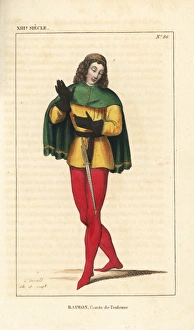Misericorde Collection
In the 13th century, Aimery de Guillaume Berard, a French knight in the court of King John II of France, found solace and compassion in the presence of misericorde
All Professionally Made to Order for Quick Shipping
In the 13th century, Aimery de Guillaume Berard, a French knight in the court of King John II of France, found solace and compassion in the presence of misericorde. This intricate carving, depicting a coppersmith from a wooden choir stall, symbolized mercy and forgiveness. The concept extended beyond religious contexts as well. It was embodied by various individuals such as the Sisters and Sisters of Charity of St. Raymond V, Count of Toulouse. These devoted women dedicated their lives to serving others with kindness and empathy. Even in times of war, mercy prevailed. An infantry sergeant from the 13th century understood that compassion could be found even amidst chaos and bloodshed. Similarly, valets or servants during the 14th century exemplified acts of mercy through their humble service to others. One notable figure who embraced both power and benevolence was Jean le Bon (John II), King of France. Clad in his military costume, he recognized that true strength lay not only in conquest but also in showing mercy towards his subjects. The significance can be seen even today through historical landmarks like Westminster Abbey's ground plan which incorporated spaces for reflection on compassion and forgiveness. Perhaps one peculiar representation is found within Saint-Gervais-Saint-Protta church where a bas-relief showcases an unexpected sight - a pork eating in a tub. This intriguing image reminds us that even animals deserve our care and understanding. Throughout history, it has been an essential virtue reminding humanity to extend grace towards one another regardless of social status or circumstances. In every era, there have been those who embody this spirit – knights like Aimery de Guillaume Berard or ordinary people who choose kindness over indifference. Let us remember these lessons from centuries past as we strive to cultivate more compassion within ourselves and society at large; for it is through acts that we can truly make a difference in the world.










